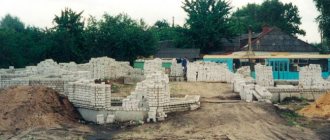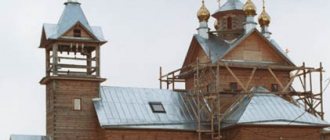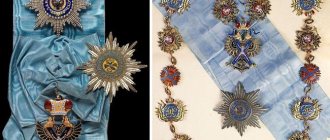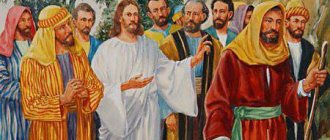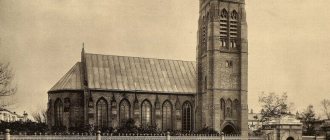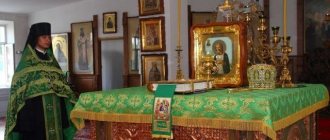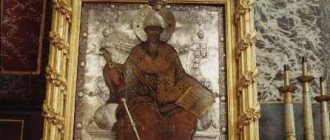Where are the remains of St. Andrew the First-Called?
The remains of St. Andrew the First-Called rest in Italy (Amalfi) and Greece (Patras). Others are in several churches throughout Europe, including Edinburgh, Scotland. After reading the article, you will become acquainted with some of the places where the remains of Andrew the First-Called are buried, as well as information about the apostle himself.
1. About the life of the Apostle Andrew
The biography of Saint Andrew is simple. He was born between 5 and 10 AD, in Bethsaida, the main fishing port of Palestine. His parents were Jonah and Joanna, and his brother was Simon. It is also known about him that he was one of the twelve main disciples of Jesus. To many Christians he is known as the "First Called". This name is associated with the fact that Andrew became the first apostle called by Jesus and declared Jesus the Messiah.
Despite his seemingly important role as an early follower of Christ, Andrew is mentioned only 12 times in the entire New Testament (four of these are simply lists of the 12 apostles). The few glimpses that are known of him suggest that he was one of the major apostles.
Given the limited coverage of Andrew in the New Testament and early Christian writings, it is not surprising that numerous legendary accounts of his ministry have emerged. To begin with, let's talk about the facts known about the Apostle Andrew.
Perhaps the most famous facts about Andrei were the following. He was a fisherman, his brother was the Apostle Peter. The first meeting with Jesus took place while Andrew was fishing off the shore of the Sea of Galilee with Peter. The New Testament says little about Andrew's personal ministry. Other sources claim that he brought the Gospel to different countries.
In Ecclesiastical History, Eusebius of Caesarea states that Andrew was sent to Scythia (an ancient region in central Eurasia). A much later source adds that he preached on the Black Sea, establishing parishes in Russia, Greece and Constantinople. An ancient apocryphal text stated his Christian mission in Achaea. Over the centuries, the church supported the ministry of the Apostle Andrew in many of these regions.
2. How did the Apostle Andrew die?
According to legend, the death of Andrew the First-Called was martyrdom. He was crucified in Patras, Greece (60). The cross was in the shape of the letter X, instead of the letter T. He, like his brother Peter, felt unworthy to be crucified on the cross of Christ. The apocryphal source “The Acts of Andrew” (2nd and 3rd centuries) includes the statement that while on the cross, the apostle preached for three days in a row. According to the Acts of Andrew, as he hung there dying, he praised the cross as a symbol of Christ's wonderful atonement.
The early church viewed the Acts of Andrew with suspicion. However, other records indicate that tradition supported a similar account of his death.
3. What happened to the remains of the Apostle Andrew after his death?
According to pious legend, Saint Regulus (later known as Rulus), a Greek monk and custodian of the relics of Saint Andrew at Patras, was told in a vision to hide some of the relics until further notice. A few days later, Emperor Constantine transported the remaining parts of Andrei's body to Constantinople.
Then the angel appeared to Rul again and told him to take the hidden bones and go west on a ship. Wherever they are shipwrecked, he must lay the foundation of a church. The angel predicted that pilgrims from all over the West would go to this shrine to receive health in body and soul. St Rule's ship was driven ashore by a storm on Cape Muckross in Fife, in the small village of Kilrymont (later St Andrews).
During the landing of Saint Rule, the Apostle Andrew appeared to the Pictish king, promising victory over his enemies. In gratitude, the king confirmed the dedication of the Church of St. Regulus to God and St. Andrew.
The second (probably more reliable) explanation is that the bones were brought to St Andrews around 732 AD by Acca, Bishop of Hexham (near Newcastle), a well-known devotee of St Andrew. Around 832 AD. e. (although some say 735 AD) Saint Andrew appeared to King Angus in a dream and promised victory. During the battle, a salted cross was seen in the sky, putting its soul into the Scots. In gratitude, Angus made gifts to the Church of St Regulus in St Andrews. He then ordered the cross of St. Andrew to become the symbol of the Picts.
Whatever the path of St Andrew's bones, it is known that in 908 AD the only bishopric in Scotland was moved from Abernethy (the royal seat) to St Andrews. Subsequently, the city quickly became famous as a place of pilgrimage. During the reigns of Malcolm Canmore and Queen Margaret, the worship of St Andrew became national. St. Andrew's Day became a national holiday. Scottish soldiers who fought in the Crusades revered Saint Andrew as the patron saint of Christian chivalry.
In 1318, St Andrew's Cathedral was consecrated and became known as the Canterbury of the North. Before the Reformation it was the largest church in Scotland. During the Reformation, the great Morbrak (reliquary) which contained the bones of the saint was destroyed.
4. Where are the remains of St. Andrew the First-Called now?
After his death in Patras, his remains (presumably 357) came first to Constantinople, and then to Italy (Amalfi) in 1206. There, a special crypt was built for the relics of St. Andrew the First-Called. When the cathedral crypt was completed in 1208, the relics were transferred to the church. The cathedral includes the adjacent 9th-century Basilica of the Crucifixion, from where steps lead to the crypt of St. Andrew the Apostle.
In the 14th century, the bones of St. Andrew were discovered to secrete a substance called Manna. And since then, Manna has been collected four times a year: January 28, June 26, November 29 and December 7. The Church does not recognize this as a miracle, but the event is still observed. Many people ask to be blessed by the anointing of this Manna. The relics of St. Andrew are said to exude a liquid called "St. Andrew." People are anointed with this liquid, and many believe it has miraculous properties.
Inside the cathedral you will notice a large bronze statue of the Apostle, made in 1604 by Michelangelo after the model of "David". Also here, above the altar, is Andrea del Asta's painting of the martyrdom of St. Andrew.
Some of the sacred relics of St. Andrew the First-Called were returned to the place of his martyrdom, in the Greek Patras (on the Peloponnese peninsula). The relics were kept for some time in St. Peter's Basilica in Rome. In 1964, the skull of St. Andrew was returned to Greece from St. Peter's Basilica. Today, the Cathedral of St. Andrew in Patras is a place of pilgrimage for Christians from all over the world.
Others ended up in several churches across Europe, including Edinburgh, Scotland. As Scotland gradually became a nation, it needed a national symbol to rally and motivate the country. St Andrew was then Scotland's inspired choice. Andrew's relics in St Mary's Cathedral in Edinburgh provide the Scots with a special connection with Amalfi in Italy and Patras in Greece.
This is the information about where the remains of St. Andrew the First-Called are located!
History of the cathedral[edit]
In 1895, a Commission for the construction of the temple was appointed.
In 1901, a competition was announced for the best architectural plan.
On June 1, 1908, the foundation was laid by King George I. The author of the project and the first leader of the construction of the cathedral was the famous Greek architect Anastasios Metaxas. After his death, in 1937, construction was headed by Georgios Nomikos.
In 1910, the construction of the temple was suspended due to the instability of the soil beneath it. In 1930, construction resumed.
The dome was erected in 1934, but the war and the economic situation of Greece in 1938 again stopped work.
Only in 1955 did construction continue, as the authorities solved the economic problem by introducing a tax on the construction of the temple to account for the electricity of the townspeople.
On September 26, 1974, the temple was inaugurated, several years after the return of the holy head of the Apostle Andrew.
Notes
- [www.pravenc.ru/text/115300.html Andrew the First-Called] // Orthodox Encyclopedia. Volume II. - M.: Church-scientific, 2001. - P. 370-377. — 752 p. — 40,000 copies. — ISBN 5-89572-007-2
- [www.patrasinfo.com/ru/andrew-the-first-called-patr Cathedral of the Apostle Andrew the First-called in the city of Patras in the Peloponnese]
- [www.molitva.gr/2011/11/patry-i-ejon/ Patras and Eion]
- [www.jerusalemtour.ru/holy/6/21/ Orthodox Pilgrimage. Patras]
- [www.sedmitza.ru/text/396894.html Relics of St. Andrew the First-Called was delivered to Moscow on the day of the enthronement of Patriarch Alexy (commentary in the light of faith): Church-Scientific]
- [vozglas.ru/?id=12&sid=0&rid=18&urid=20&pid=4&iid=635 “Vozglas” newspaper. No. 15 (188), 2011: Patras. Place of the martyrdom of Andrew the First-Called.]
- [www.e-patras.gr/portal/web/common/452 Cathedral of St. Andrew. Official website (Greek, English, German, French, Italian)]
Description[edit]
Cathedral architecture[edit]
The Cathedral of St. Andrew the First-Called was built in the neo-Byzantine style and gives the impression of a solid, massive building. It is in the center of a large square planted with trees. The square overlooks the shore of the Gulf of Corinth, and the central dome of the temple, crowned with a five-meter gilded cross, is visible from the sea from afar. Twelve small bell domes with crosses surround the large dome, symbolizing Jesus surrounded by the twelve apostles. The three facades of the church are decorated with porticoes supported by Corinthian columns and a row of openwork monophores inscribed in a semicircle. The church seats 5,500 people.
Cathedral interior[edit]
The Cathedral of St. Andrew the First-Called has the shape of a Greek cross in its plan. Its distinctive feature is the abundance of light; light pours through the large windows of the facades and the drum of the central dome. The interior of the temple is impressive with an abundance of mosaics. In the center of the dome is a mosaic of Christ Pantocrator; the semicircular apse is covered with a mosaic depicting the Virgin Mary stretching out her arms over the city, as if holding an invisible cover; we will also see the mosaic of St. Andrew the Apostle. The floor of the cathedral is also decorated with mosaics depicting plants, birds, fish and animals. A carved wooden chandelier hangs in the center of the temple.
In the right aisle of the temple there is a throne of white marble, under the shadow of which the venerable head of St. Andrew the First-Called rests in a silver ark. Behind the throne there is a reliquary in the shape of St. Andrew's cross, in which preserved particles of the cross on which the apostle was crucified are interspersed.
